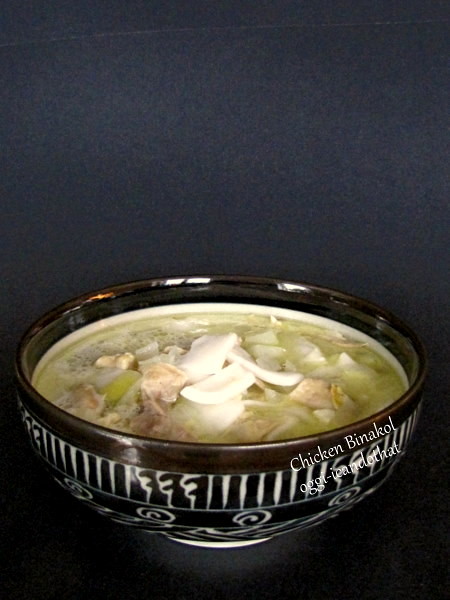chicken soup cooked in young coconut water
Chicken Binakol
adapted from KULINARYA guidebook
2 tablespoons light olive oil
2 cloves garlic, minced
1-inch piece ginger, peeled and finely chopped
1 small onion, chopped
4 scallions, chopped
1 pound whole chicken breast, bone-in
2 stalks lemon grass, white parts only, pounded
4 whole black peppercorns
¼ cup fish extract
2 cups buco (young coconut) water
6 cups chicken broth
1 cup buco meat, cut into 2 x 1-inch strips
4 scallions, chopped
pepper leaves for garnish, optional
adapted from KULINARYA guidebook
2 tablespoons light olive oil
2 cloves garlic, minced
1-inch piece ginger, peeled and finely chopped
1 small onion, chopped
4 scallions, chopped
1 pound whole chicken breast, bone-in
2 stalks lemon grass, white parts only, pounded
4 whole black peppercorns
¼ cup fish extract
2 cups buco (young coconut) water
6 cups chicken broth
1 cup buco meat, cut into 2 x 1-inch strips
4 scallions, chopped
pepper leaves for garnish, optional
- In a large pot, heat the oil and add garlic, ginger, and onion. Add the chicken breast, lemon grass, and peppercorns. Add the fish extract, buco water, and chicken broth. When it begins to boil, reduce the heat to a simmer, cover, and cook for 30 minutes or until chicken is cooked through.
- Remove chicken from bone and slice into strips.
- Strain broth and remove fat with a fat separator if desired. Return broth to the pot and bring back to a boil. Add the chicken strips and buco meat and simmer until heated through. Serve topped with chopped scallions and pepper leaves.













